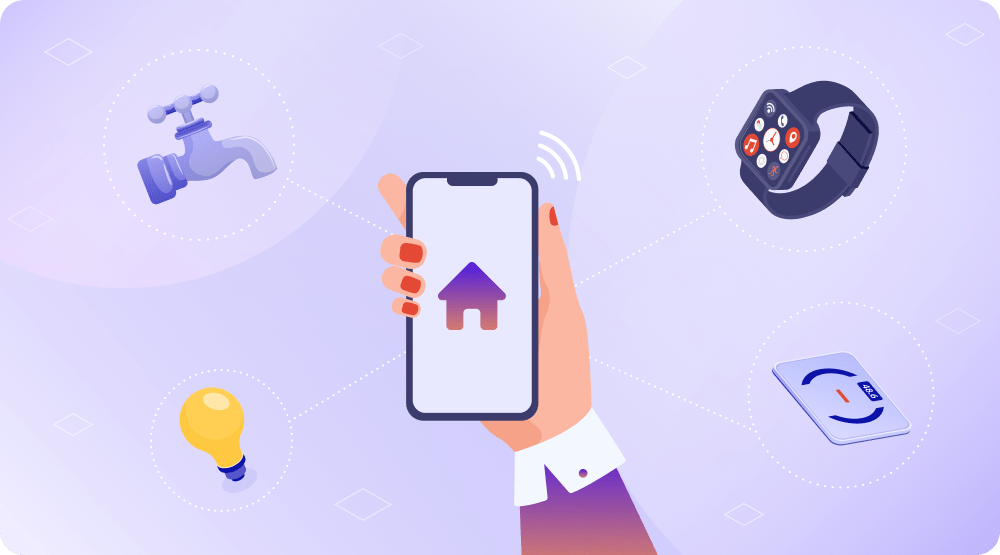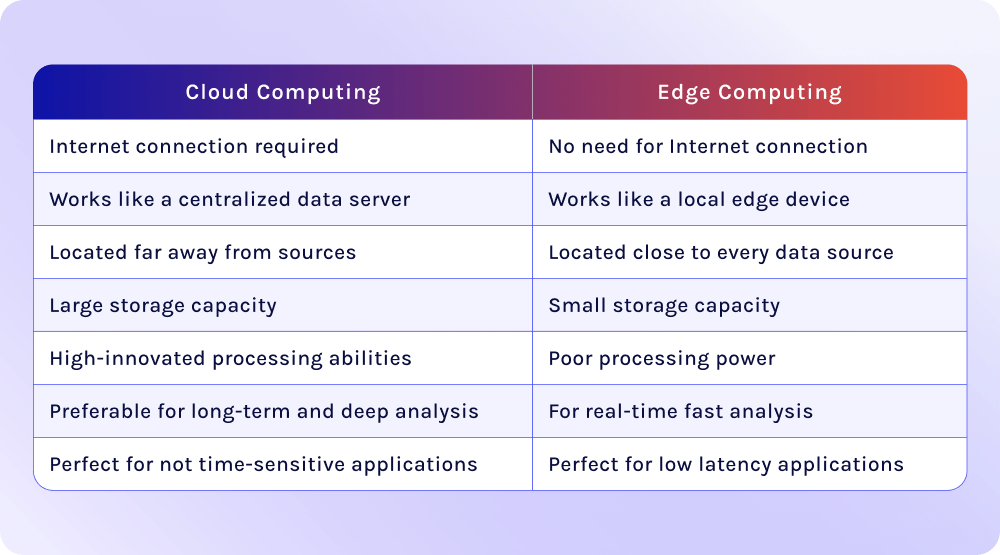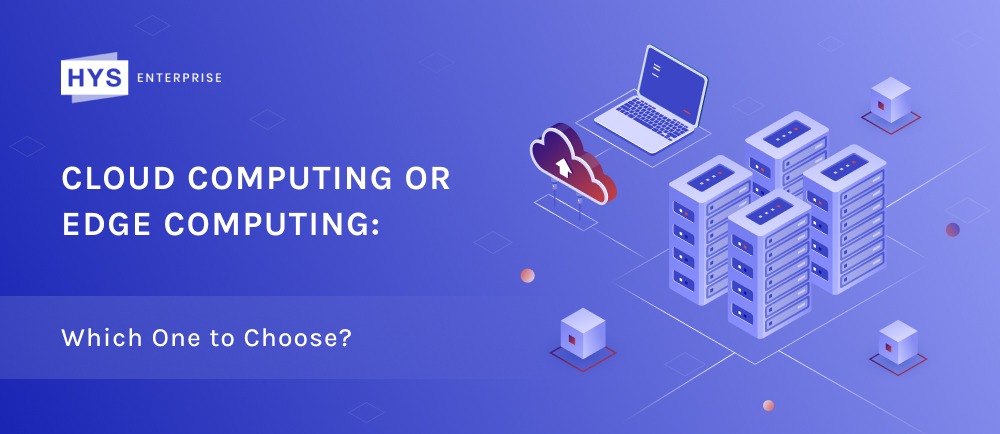What is Cloud Computing
Cloud computing is the supply of computing services such as databases, servers, storage, networks and analytics over the cloud to enable faster innovations and flexible resource allocation. It has become a precious service for thousands of enterprises. According to Technopedia, the global cloud computing market was valued at $546.1 billion in 2022. There are three types of cloud computing:
- Infrastructure as a Service (IaaS)
IaaS is a cloud computing model that provides on-demand services such as servers, storage, networking, and virtualization over the internet
- Platform as a Service (PaaS)
PaaS is another model that works as a development environment, carrying everything companies need to build, run and manage their applications
- Software as a Service (SaaS)
SaaS is a cloud computing model that gives users a possibility to connect and use cloud-based applications like email, calendar or office tools via the internet.
If you’re planning migration to cloud and looking for a reliable vendor, in HYS Enterprise we can offer our services to your company. You can check our expertise in cloud computing here.
Before using any services you should consider all cons and pros. Let’s explore the pros and cons of cloud computing.
Advantages of Cloud Computing
1. Security
We can never predict the probability of cyber attacks or data breaches. A lot of companies are concerned about their cybersecurity, especially while using cloud services. Nevertheless, cloud computing services take comprehensive measures to avoid such incidents. Cloud providers assure trustable security solutions. They employ encryption, multi-factor authentication, and security audits to prevent data leaks.
2. Accessibility
Cloud computing allows the use of smartphones and other connected devices. Furthermore, cloud services are accessible from any place with an internet connection. It’s really comfortable for employees who live far away from their office, remote workers, travelers, and those who have busy schedules to easily keep up with co-workers and clients.
3. Sustainability
Every remote service like cloud computing leads to reducing paper usage, carbon footprint and increasing energy efficiency. In general, this practice is more environmentally friendly than traditional IT setups.
4. Automatic Software Update
Cloud service providers maintain and update the software regularly, so the IT department experts don’t need to do it themselves. It saves IT employees’ time and money for IT consultation and provides companies with the latest features and security patches without putting in any effort from the company’s side.
5. Cost Effective
Cloud computing allows startups and businesses to access data at any time, which can lead to cost and time savings. Also you should not be concerned about features that you will not use but pay. With a pay-as-you-go system enterprises pay only for resources they use.
6. Quality Control
In the cloud system, all documents are located in one place and stored in a single format. This can help companies avoid errors, maintain data consistency, and have a transparent record of any updates or revisions.
Disadvantages of Cloud Computing
1. Limited Control
The cloud service provider maintains cloud infrastructure, so companies as customers have minimal control over it. Enterprises can manage data, applications, and services on the cloud, but aren’t able to access server shells or update and manage firmware.
2. Cloud Downtime
Even cloud services can face downtime, during which users can lose control over applications and data. Downtime can cause loss of time, lower productivity, and disrupt business processes.
3. Vendor Lock-In
It can be difficult for enterprises to move their service from one vendor to another. Differences between vendor platforms can cause problems during the process of migration from one cloud platform to another, which can lead to additional costs and configuration complications.
4. Limited Offline Access
Cloud services require an internet connection in most cases. So, in situations where internet access is unstable or not available, users can have problems with applications or data admission.
5. Data Transfer Speeds
Uploading or downloading large data amounts from and to cloud service can seem like a problem, especially for enterprises with poor internet connectivity. That can cause lower efficiency and time wasting.

What is Edge Computing
Edge computing is the operation of processing data closer to where it’s needed, instead of sending it far away to a central location. It enables devices to work faster and smarter. It’s ideal for applications like self-driving cars, IoT devices, and smart appliances. There are various components associated with edge computing:
- Network Edge
In general, edge computing doesn’t require a separate network, but it may be necessary in cases where a stronger connection between the user and the cloud is necessary. For example, 5G is really useful for autonomous drones or smart city projects due to its high-speed wireless connection, especially when the cloud server is located far away.
- On-Premises Infrastructure
It can be used in the management of local systems or connection to networks and servers, bridges, routers and hubs.
- Edge Devices
Point of Sales (POS) systems, Internet of Things (IoT), vehicles, or robots can serve as edge devices if they compute on local areas and are connected to the cloud.
Edge computing can seem like a difficult topic, so let’s delve deeper to check its advantages and disadvantages.
Advantages of Edge Computing
1. Security and Privacy
With local processing, your data can be stored on local devices, which improves privacy and helps to avoid data breaches during transit to centralized servers.
2. Cost-Efficiency
Edge computing can help reduce costs connected to data transmission and storage usage since smaller amounts of data need to be sent and stored in centralized servers.
3. Swiftness
Processing data closer to a source can reduce latency, increase efficiency and overall service quality, and is crucial for applications that require real-time processing like IoT devices.
4. Scalability
Edge computing allows using small devices in various locations, it’s like having a lot of small teams working together instead of investing in one large data center. By this, you can spread all work across numerous edge devices, which will be easier and faster than working from one big center.
5. Real-time Insights
With local data processing, you can gain immediate insights into workflows, enabling fast analysis and decision-making.
Disadvantages of Edge Computing
1. Limited Power
Small edge devices cannot have the same power as one centralized data server, which can cause workflow problems and limit the solution of complex tasks.
2. Management Complexity
Managing distributed network edge devices spread across various locations can be a serious problem for enterprises without reliable IT support.
3. Hidden Cost
Although edge computing may seem cost-saving, expenses for migration can be crucial. It usually requires a lot of resources to migrate from traditional IT infrastructure to edge devices.
4. Compatibility Issues
It can be challenging to ensure a perfect working environment between different types of edge devices as they have different capabilities, benefits, power, and limits.
Now that we’ve explored all the pros and cons of edge and cloud computing, let’s finally dig into their differences and similarities.
The Similarities of Cloud and Edge
We can’t deny the similarity between cloud and edge computing. These technologies are both related to data processing, however with different applications and focus. Nevertheless, we can mark some general similarities between them:
- Data Storage
- Cost Efficiency
- Data Processing
- Scalability
- Reliability
- Real-Time Processing
Difference between Cloud Computing and Edge Computing
To help you understand the main differences between edge and cloud computing, please check the table below.

Conclusion
Hence, we can define that cloud computing is a perfect choice for enterprises that are looking for centralized, scalable and powerful solutions, while edge computing can be beneficial for the companies looking for localized, real-time processing and low-latency ones.
Nevertheless, even having considered all aspects of cloud computing and edge computing, their benefits and limitations, similarities and differences, your choice fully depends on the needs of your company. Both technologies have their pros and cons, which could be either reliable or critical for your business. Undeniably, edge and cloud play crucial roles in modern computing ecosystems.
If you are considering cloud computing migration for your company, in HYS Enterprise we can provide you with full guidance throughout this complicated process. With the assistance of our experts your migration will remain smooth and seamless. Get in touch with us today – Book a Call Now!
